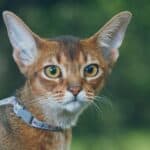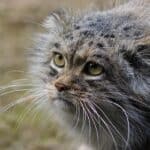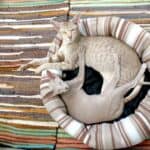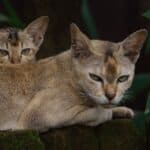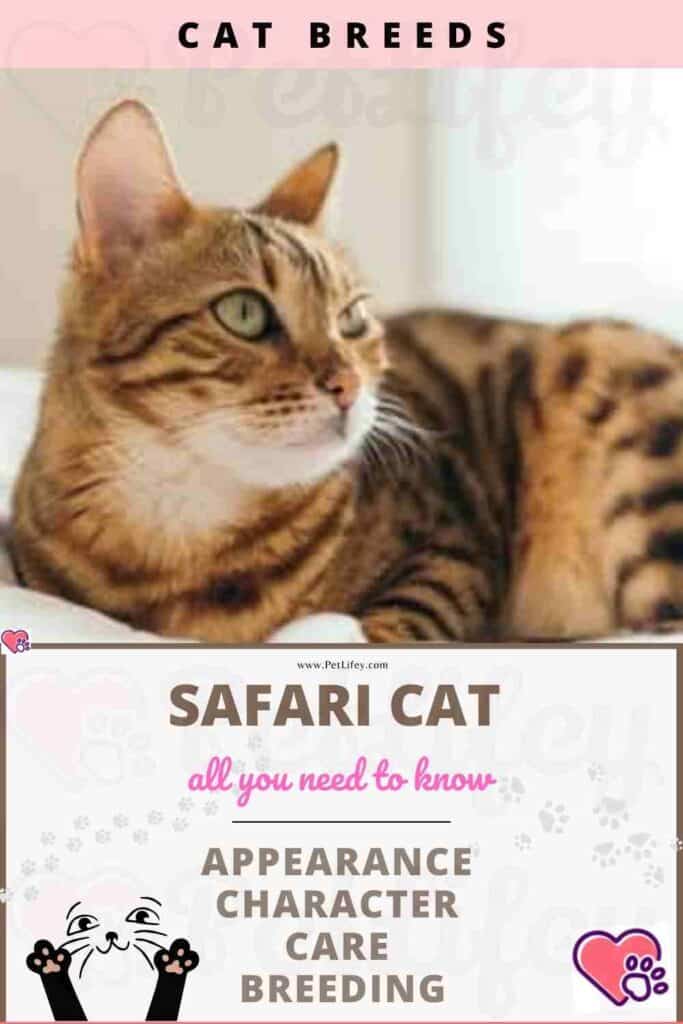
The safari is a very rare breed, of which we know very little today. However it seems that this exotic cat has a very good temperament!
The origins of the Safari Cat
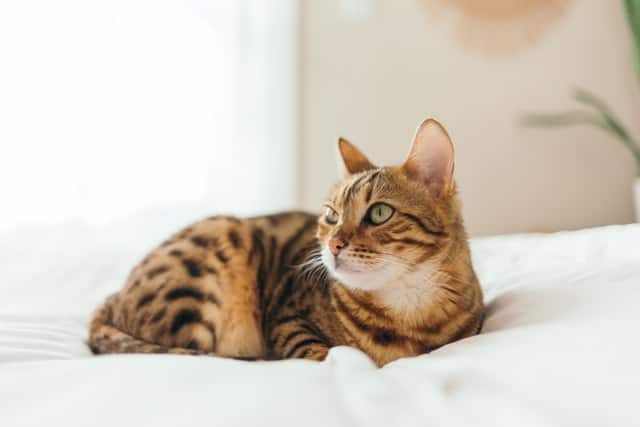
The Safari is a cat resulting from a hybridization, between a domestic cat and a wild feline, the Leopardus Geoffroy, Geoffroy’s cat. Developed in the United States in the 1970s (before Bengal ), there are only 70 specimens.
It is a very rare breed, especially due to the fact that it is very difficult to develop. Indeed, Geoffroy’s cat has 36 chromosomes, against 38 for the domestic cat.
The kittens then have 37 chromosomes, which has the effect of radically increasing their size once an adult compared to the parents from which they come, especially safari cats from the first generation.
The following generations then regain a more normal size. Another complexity: gestation is longer than for the domestic cat.
Appearance of the Safari Cat
No standard has yet been recognized. The fact remains that the safari is a short-haired cat with a spotted tabby pattern, exotic in appearance, and that it is large: the F1 safari (so-called, “first generation”) weigh around 15 kilos, while subsequent generations hover around 11 kilos.
Coat color of the Safari Cat
Always spotted tabby pattern, that is to say solid black spots.
The character of the Safari Cat
It seems that from the first generation, safaris are cats with an easy, mischievous, intelligent and rather dynamic character! They would also be affectionate, with great adaptability.
Cuddle:
Sometimes cats that have hybridized with wildlife prefer to spend their energy on physical activities, rather than being offered cuddling sessions. However, anecdotal accounts present Safaris particularly affectionate.
Player:
This beast usually appreciates dynamic play that entertains and stimulates it. It is therefore essential to offer them interactive fun activities on a daily basis. Athletes, some of them would even enjoy swimming and climbing!
Calm:
When its needs for physical activity are met, it relaxes if it wants to with its humans. It is always necessary to plan posts in height where it can rest.
Intelligent:
It is lively, perceptive and demonstrates a great capacity for learning.
Fearful / Suspicious
of Strangers : Fear of strangers varies from cat to cat, but since they are typically energetic and inquisitive, they usually adapt well to novelty.
Independent:
It is always important to ensure that your cat gets enough physical activity and stimulation, regardless of the cat’s breed. In a context where it evolves in an enriched environment with observation posts at height, games and food stimulation, it can endure loneliness.
Behavior of the Safari Cat
Talkative:
Overall, in the domestic cat, the tendency to vocalize to communicate with humans varies greatly between individuals and contexts. Some hybrid breeds might be a bit more talkative than the average cat. It is therefore possible that the Safari is too, but little information is available on this subject.
Greedy / gluttonous:
Since it has a lot of energy, it generally has a good appetite.
Need for exercise:
It has a great need for exercise and various activities.
Runaway:
Explorer and active, it appreciates expeditions abroad. Using a leash fitted with a harness makes going out easier and reduces the risk of running away.
Compatibility of the Safari Cat with other animals
Safari and Dogs:
Compatibility with dogs is variable and depends on socialization at a young age as well as the way of presenting them to each other. That said, a dog and a Safari might get along well, but there is little information to document this type of relationship well.
It is important to provide observation and resting posts at height so that the cat can avoid unwanted contact with its canine companion.
Safari and Other Cats:
This relationship depends on several factors including how each was socialized while they were kittens. However, cohabitation between a domestic cat and a hybrid feline is not recommended especially for the first generations after hybridization (F1 to F3).
Safari and Children:
Few data allow to properly document the relationship of this feline with children. They could probably make good playmates, but you have to remain vigilant and supervise interactions.
In addition, it is imperative to teach children of all ages to fully understand the body language of the cat and to respect its limits.
The Safari and the Elderly:
Since cats of this breed generally have a lot of energy, some calmer people might find them too active.
Price of the Safari Cat
The purchase price varies greatly from one farm to another. On average, it is between 5000 USD and 7000 USD. The fees are high due to the rarity of the breed. Lineage, sex and age could also influence the cost. You have to plan to meet your needs, by providing them with quality food and making sure to keep them in good health.
Beware of fraudulent breeders who seek to sell cats of other breeds under the name “Safari”.
Maintenance of the Safari Cat
Grooming:
It is still difficult to come up with a reliable maintenance protocol, but for all domestic cats regular brushing is recommended.
Hair
loss : Hair loss does not appear to be very pronounced.
Food of the Safari Cat
Obviously, good quality food is essential. It should be suitable for its high energy level, age and medical requirements.
Caring for the Safari Cat
No specific specific treatments noted to date, the rare being still very rare.
Health of the Safari Cat
Life expectancy:
Average longevity is estimated to be around 15 years, but trends are based on a small number of individuals.
Resistant / Robust:
In the absence of evidence, it is difficult to determine the robustness of this breed. It was given a rating of 2 as an average rating.
Tendency to gain weight:
The risk of feline obesity is influenced by many factors, such as the cat’s age, environment, diet and activity. Since this cat is very energetic, the risk of developing overweight is low if the physical activity needs are met.
Frequent diseases:
Since this breed is rare and unknown, it is difficult to comment on the physiological health of its individuals. In all cases, an annual medical examination is recommended to ensure its well-being and health.
What is more, it can suffer from the same diseases as domestic cats which are not hybrids, in particular oral pathologies.
Reproduction:
No information is available on possible marriages with other breeds of cats. Some hybrid breeds, including the Safari, experience reproductive challenges, particularly associated with infertility in individuals.
Geoffroy’s cat is protected by various regulations concerning the possession and reproduction of exotic wild species.
Good to know
The degree of similarity between the genome of several species of felines is high, which facilitates hybridization between the domestic cat and some of its wild cousins. Several of them have the same number of chromosomes, which often have the same structure.
However, the Safari is the result of a cross between the domestic cat and Geoffroy’s cat, Leopardus geoffroyi. These cousin species are both part of the Felidae family and are genetically similar enough to hybridize. However, the genome of Geoffroy’s cat consists of 36 chromosomes, against 38 for the domestic cat. The descendants of hybridization, the Safaris, have 37 chromosomes. This genetic variability between the two species complicates the crossing. To this day, the process is laborious and reproduction remains complicated.
When choosing a cat of this breed, it is important to be well documented and to be in contact with reliable breeders.

